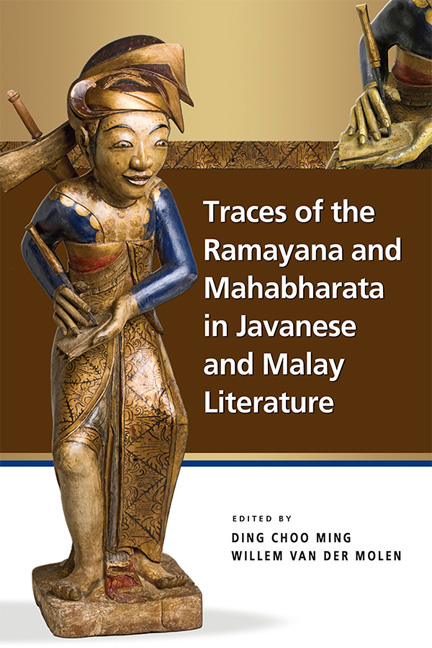Book contents
- Frontmatter
- Contents
- Abbreviations
- About the Contributors
- 1 Introduction
- 2 The Rāmāyaṇa in Java and Bali: Chapters from its Literary History
- 3 Abimanyu Gugur: The Death of Abimanyu in Classical and Modern Indonesian and Malay Literature
- 4 Drona's Betrayal and Bima's Brutality: Javanaiserie in Malay Culture
- 5 Ramayana and Mahabharata in Hikayat Misa Taman Jayeng Kusuma
- 6 The Death of Śalya: Balinese Textual and Iconographic Representations of the Kakawin Bhāratayuddha
- 7 The Illustrated Asṭabrata in Pakualaman Manuscript Art
- Index
- Nalanda-Sriwijaya Series
1 - Introduction
Published online by Cambridge University Press: 04 July 2018
- Frontmatter
- Contents
- Abbreviations
- About the Contributors
- 1 Introduction
- 2 The Rāmāyaṇa in Java and Bali: Chapters from its Literary History
- 3 Abimanyu Gugur: The Death of Abimanyu in Classical and Modern Indonesian and Malay Literature
- 4 Drona's Betrayal and Bima's Brutality: Javanaiserie in Malay Culture
- 5 Ramayana and Mahabharata in Hikayat Misa Taman Jayeng Kusuma
- 6 The Death of Śalya: Balinese Textual and Iconographic Representations of the Kakawin Bhāratayuddha
- 7 The Illustrated Asṭabrata in Pakualaman Manuscript Art
- Index
- Nalanda-Sriwijaya Series
Summary
The written literatures of Malay and Javanese have a long history — more than one thousand years in the case of Javanese. During this long period the outward appearance of the book changed beyond recognition, themes occupying the minds of the authors and their audiences were adapted to new ideologies, long established literary conventions gave way to completely different ones, and the languages concerned, subject to constant renewal like any natural language, went through successive stages that became more and more incomprehensible with increasing distance in time.
These and other factors contributed to old texts falling into oblivion and new ones rising to popularity. A constant element amidst change, resisting the threat of oblivion, was the Ramayana and Mahabharata. Having arrived early in the history of Javanese literature, both epics found expression in various forms during the long period of Indian influence. The epics remained after the Indianized culture to which they belonged waned and disappeared. Continuing to manifest themselves in all sorts of shapes, their presence was not undermined by the advance of Islam in Java, nor was it by the more recent influence of Western culture. Information on the history of Malay literature, though providing less detail, shows a similar picture.
The chapters collected in Traces of the Ramayana and Mahabharata in Javanese and Malay Literature go beyond mapping epic presence. They show what happened during transmission, adaptation and borrowing, and offer hypotheses on the underlying motives. The authors scrutinize a couple of selected texts and pictorial representations and — again or for the first time — address old questions and raise new ones, going back and forth in time, connecting Javanese and Malay and even Balinese literature.
The author with whom the volume opens, Stuart Robson, gives an overall view of the history of one text, the story of Rama and Sita, from the Old Javanese Ramayana of the ninth century up to the Serat Rama and Rama Keling written in the seventeenth and eighteenth centuries. Quite extraordinarily, the intervals between copies (partly hypothetical, partly based on real examples) appear to coincide with important moments in the history of Javanese culture. Taking Teeuw's theory on literary history and on translation as his starting point, the author is able to explain continued Javanese interest in the story from the wider social context as it developed over almost one millennium.
- Type
- Chapter
- Information
- Publisher: ISEAS–Yusof Ishak InstitutePrint publication year: 2018

